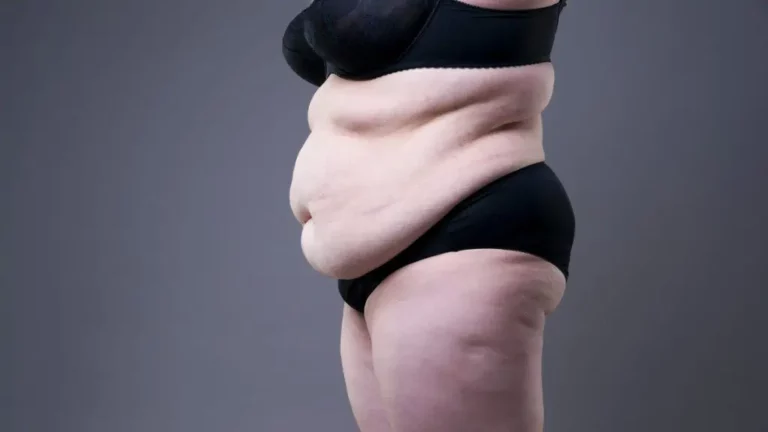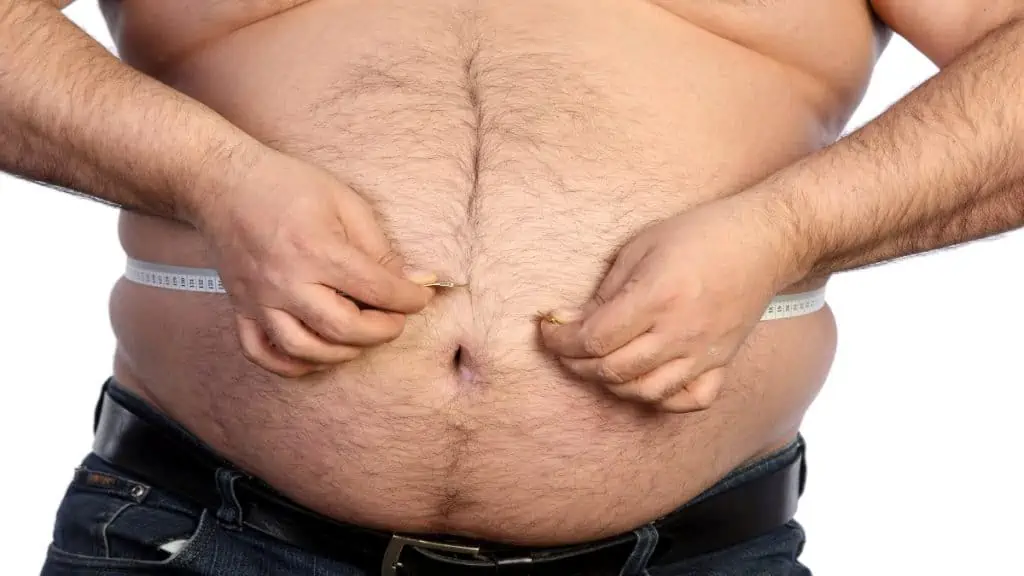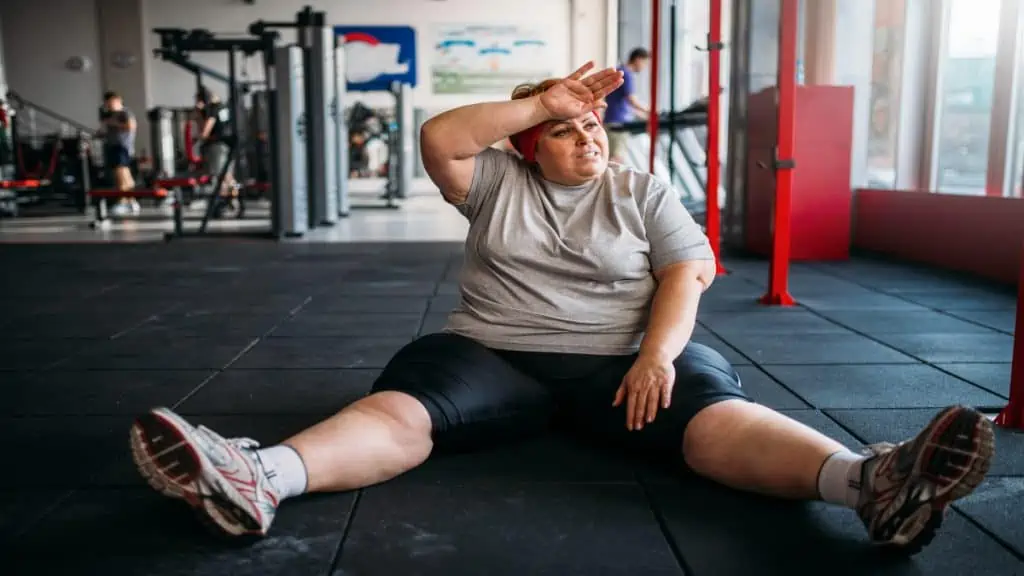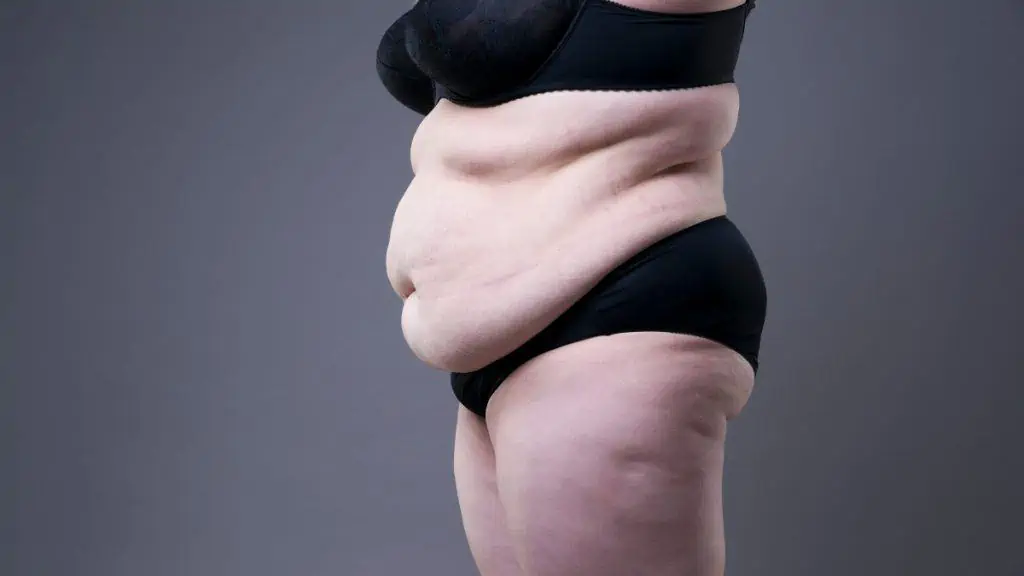
A 55 inch waist size is considerably larger than the average waist size in both the UK and the US. Consequently, if your waist measures 55 inches, it is highly likely that you are endangering your long-term well-being and sacrificing your short-term quality of life.
Certainly, individuals experience weight gain due to a multitude of factors. However, with the appropriate knowledge and ample motivation, virtually anyone can reduce their 55-inch waist and experience significant improvements in their health.

There are several reasons why people may gain weight. Nevertheless, armed with the right information and sufficient determination, nearly everyone has the potential to slim down, measuring their 55 inch waist, leading to a substantial enhancement in their overall health.
More Common Waist Measurements:
- 50 inch waist
- 51 inch waist
- 52 inch waist
- 53 inch waist
- 54 inch waist
- 56 inch waist
- 57 inch waist
- 58 inch waist
- 59 inch waist
Contents
- How does having a 55 inch waist affect your health?
- Increased risk of chronic diseases
- Cardiovascular strain
- Respiratory difficulties
- Joint problems
- Reduced mobility and physical endurance
- Negative impact on mental health
- What actually causes people to have a 55 inch waist?
- How can you safely reduce your 55 inch waist?
- Eat a balanced diet
- Control portion sizes
- Stay hydrated
- Incorporate exercise
- Strength training
- Reduce sedentary time
- Manage stress
- Get enough sleep
- Practical advice on slimming your 55 inch waist
- Choose healthier foods
- Watch your portions
- Stay hydrated
- Get moving
- Build muscle
- Limit sitting time
- Manage stress
- Prioritize sleep
- Conclusion
- References
- Related
How does having a 55 inch waist affect your health?
Having a 55-inch waist can have significant implications for your health. Here’s how it can impact you:
Increased risk of chronic diseases
A waist size of 55 inches is well above the average, indicating excess abdominal fat. This excess fat can lead to a higher risk of developing chronic conditions such as heart disease, type 2 diabetes, and certain types of cancer.
Cardiovascular strain
Carrying excess weight around your waist puts strain on your cardiovascular system. It can lead to high blood pressure, increased cholesterol levels, and a greater risk of heart attacks and strokes.
Respiratory difficulties
Abdominal fat can compress the lungs and diaphragm, making it harder to breathe. This can result in shortness of breath, reduced lung function, and increased susceptibility to respiratory conditions like sleep apnea.
Joint problems
Carrying excess weight puts additional stress on your joints, particularly in the hips, knees, and ankles. This can lead to joint pain, stiffness, and an increased risk of conditions like osteoarthritis.
Reduced mobility and physical endurance
Excess weight around the waist can limit your mobility and make physical activities more challenging. It can lead to fatigue, decreased stamina, and a lower overall quality of life.
Negative impact on mental health
Living with a large waist size can negatively affect self-esteem and body image, leading to psychological distress, depression, and anxiety.

It’s important to note that these health risks are not definitive outcomes for everyone with a 55-inch waist. However, it indicates a need for lifestyle changes to promote better health and reduce the associated risks. With the right knowledge, motivation, and support, individuals can make positive changes to improve their health and well-being.
What actually causes people to have a 55 inch waist?
Having a waist size of 55 inches can be attributed to a combination of factors related to diet, physical activity, genetics, and overall lifestyle choices. When it comes to weight gain and body fat accumulation, several key factors play a role.
Firstly, excessive calorie intake is a primary contributor to weight gain. Consuming more calories than the body requires leads to the storage of excess energy as fat. A diet rich in high-calorie, processed foods and sugary beverages can contribute to weight gain and an increase in waist size.
Secondly, physical inactivity or a sedentary lifestyle can contribute to weight gain and the accumulation of fat around the waist. Insufficient exercise limits calorie expenditure and can lead to weight gain and increased waist size.
Genetics also plays a role in determining body shape and predisposition to weight gain. Some individuals may have a genetic tendency to store fat in the abdominal region, resulting in a larger waist size.
Additionally, hormonal imbalances, such as elevated levels of cortisol (the stress hormone), can contribute to weight gain, particularly around the waist. Chronic stress and poor sleep patterns can disrupt hormonal balance and promote fat accumulation in the abdominal area.
Furthermore, certain medical conditions and medications can contribute to weight gain and an increase in waist size. Conditions such as polycystic ovary syndrome (PCOS) and hypothyroidism can affect metabolism and promote weight gain.

To sum up, a waist size of 55 inches typically results from a combination of factors, including excessive calorie intake, physical inactivity, genetic predisposition, hormonal imbalances, and certain medical conditions. Making healthy lifestyle choices, such as adopting a balanced diet, engaging in regular physical activity, managing stress levels, and seeking appropriate medical care, can help individuals maintain a healthier waist size.
How can you safely reduce your 55 inch waist?
If you’re looking to safely reduce your 55-inch waist, there are several steps you can take. It’s important to remember that sustainable weight loss requires time and consistency, so don’t expect overnight results. Here are some simple tips to help you on your journey:
Eat a balanced diet
Focus on consuming whole foods like fruits, vegetables, lean proteins, and whole grains. Limit processed foods, sugary snacks, and sodas.
Control portion sizes
Pay attention to how much you eat. Use smaller plates and bowls to help regulate your portions and prevent overeating.
Stay hydrated
Drink plenty of water throughout the day. Water can help curb your appetite and keep you feeling full.
Incorporate exercise
Engage in regular physical activity. Choose activities you enjoy, such as walking, swimming, or cycling. Aim for at least 30 minutes of moderate exercise most days of the week.
Strength training
Include strength training exercises to build muscle mass. Muscles burn more calories, even at rest, which can aid in weight loss.
Reduce sedentary time
Limit the amount of time spent sitting or lying down. Take breaks, stand up, and move around regularly, especially if you have a sedentary job.
Manage stress
Find healthy ways to cope with stress, such as practicing mindfulness, yoga, or deep breathing exercises. Stress can contribute to weight gain, so it’s important to address it.
Get enough sleep
Aim for 7-8 hours of quality sleep each night. Poor sleep can affect your metabolism and increase your cravings for unhealthy foods.

Remember, making gradual and sustainable changes to your lifestyle is key. Consult with a healthcare professional or registered dietitian for personalized advice and support.
Practical advice on slimming your 55 inch waist
If you’re looking to slim down your 55-inch waistline, here are some practical tips to help you on your journey. These simple steps can make a big difference in your waistline and overall health:
Choose healthier foods
Opt for nutritious options like fruits, vegetables, lean meats, and whole grains. Avoid processed foods, sugary snacks, and sodas.
Watch your portions
Be mindful of how much you eat. Use smaller plates and bowls to control your portions and avoid overeating.
Stay hydrated
Drink plenty of water throughout the day. Water helps you feel full and satisfied, reducing the urge to snack unnecessarily.
Get moving
Engage in regular physical activity that you enjoy. Take walks, swim, or ride a bike for at least 30 minutes most days.
Build muscle
Include strength training exercises in your routine. Lifting weights or doing bodyweight exercises helps build muscle, which can boost your metabolism and burn more calories.
Limit sitting time
Avoid sitting for long periods. Take breaks, stand up, and move around frequently, especially if you have a desk job.
Manage stress
Find healthy ways to cope with stress, like deep breathing or practicing mindfulness. Stress can contribute to weight gain, so it’s important to find effective strategies to manage it.
Prioritize sleep
Aim for 7-8 hours of quality sleep each night. Sufficient sleep supports healthy metabolism and helps control cravings.

Remember, sustainable weight loss takes time and consistency. Make small changes gradually and seek guidance from a healthcare professional or registered dietitian for personalized advice. Stay motivated and celebrate your progress along the way!
Conclusion
In conclusion, having a waist size of 55 inches can significantly impact your health and well-being. It increases the risk of chronic diseases, puts strain on the cardiovascular system, hinders respiratory function, leads to joint problems, reduces mobility and physical endurance, and negatively affects mental health.
Several factors contribute to a 55-inch waist, including excessive calorie intake, physical inactivity, genetics, hormonal imbalances, and certain medical conditions. To safely reduce a 55-inch waist, individuals should focus on adopting a balanced diet, controlling portion sizes, staying hydrated, incorporating regular exercise, managing stress, getting enough sleep, and seeking professional guidance.
Moreover, sustainable changes and consistency are key to achieving a healthier waist size and overall well-being.
References
- Grundy, S. M., Cleeman, J. I., Daniels, S. R., Donato, K. A., Eckel, R. H., Franklin, B. A., … & Costa, F. (2005). Diagnosis and management of the metabolic syndrome: an American Heart Association/National Heart, Lung, and Blood Institute Scientific Statement. Circulation, 112(17), 2735-2752. https://doi.org/10.1161/CIRCULATIONAHA.105.169404
- Wang, Y., Rimm, E. B., Stampfer, M. J., Willett, W. C., & Hu, F. B. (2005). Comparison of abdominal adiposity and overall obesity in predicting risk of type 2 diabetes among men. The American journal of clinical nutrition, 81(3), 555-563. https://doi.org/10.1093/ajcn/81.3.555
- World Health Organization. (2000). Obesity: preventing and managing the global epidemic. World Health Organization. https://www.who.int/nutrition/publications/obesity/WHO_TRS_894/en/
- Zimmet, P., Alberti, K. G. M. M., & Shaw, J. (2001). Global and societal implications of the diabetes epidemic. Nature, 414(6865), 782-787. https://doi.org/10.1038/414782a